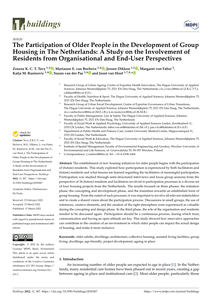.This workshop gives you hands-on experience of developing gameplay concepts with a practical tool that will challenge you to see your ideas in a new light. We will reveal unconscious biases, and help you to be both creative and pragmatic with your early designs. Mata and Thomas, who ran 2018’s paper prototyping workshop, are back to help you explore ‘ideation systems’: what they are, why they feel good to use, and why they often don’t fulfil the needs of individuals or companies. At the end of the session you will have learnt and used a new method for stimulating your own creativity, and a way to sanity-check your ideas before you commit to an expensive path of exploration. The workshop will help anyone involved with game concepting and early prototype development – from large companies to indie teams. At the end of the session you will have learnt and used a new method for stimulating your own creativity, and a way to sanity-check your ideas before you commit to an expensive path of development. You’ll be able to take this method back to your studio and use it with the rest of your team to create new concepts for your projects and enhance both morale and collaboration.
DOCUMENT
In Nederland is er een groeiende behoefte aan collectieve huisvesting voor ouderen om de kloof tussen 'ageing in place' en institutionele zorgvoorzieningen te overbruggen. Participatie van ouderen in de concept- en ontwerpfase is belangrijk om het marktaanbod af te stemmen op de behoeften van (toekomstige) bewoners. Sociale ondernemers vinden het echter een uitdaging om ouderen te betrekken. Dit hoofdstuk verkent verschillende manieren waarop ouderen betrokken kunnen worden bij het ontwikkelen van nieuwe wooninitiatieven. De ladder van burgerparticipatie wordt hier gebruikt om verschillende rollen te verkennen die (toekomstige) bewoners zouden kunnen spelen met verschillende niveaus van invloed, van niet-participatie tot burgerkracht. Overwegingen voor betekenisvolle participatie worden besproken. Verder wordt een Nederlandse casestudy gepresenteerd waarin vastgoed werd getransformeerd op basis van de betrokkenheid van ouderen, die illustreert hoe door het gebruik van een innovatieve methode partnerschappen kunnen worden gevormd tussen (toekomstige) bewoners en besluitvormers. Dit hoofdstuk concludeert dat naast de huisvesting zelf, ook de gebouwde omgeving en de buitenomgeving in beschouwing moeten worden genomen om de leefomstandigheden van ouderen te verbeteren.
DOCUMENT

The establishment of new housing initiatives for older people begins with the participation of (future) residents. This study explored how participation is experienced by both facilitators and (future) residents and what lessons are learned regarding the facilitation of meaningful participation. Participation was studied through semi-structured interviews and focus group sessions from the perspective of 34 (future) residents and facilitators involved in participation processes in a diverse set of four housing projects from the Netherlands. The results focused on three phases: the initiation phase, the concepting and development phase, and the transition towards an established form of group housing. From the outset of such processes, it was important to involve all relevant stakeholders and to create a shared vision about the participation process. Discussions in small groups, the use of references, creative elements, and the creation of the right atmosphere were experienced as valuable during the concepting and design phase. In the third phase, the role of the organisation and residents needed to be discussed again. Participation should be a continuous process, during which trust, communication and having an open attitude are key. This study showed how innovative approaches can contribute to the creation of an environment in which older people can impact the actual design of housing, and make it more inclusive. Original article at: https://doi.org/10.3390/buildings12030367 © 2022 by the authors. Licensee MDPI.
MULTIFILE
